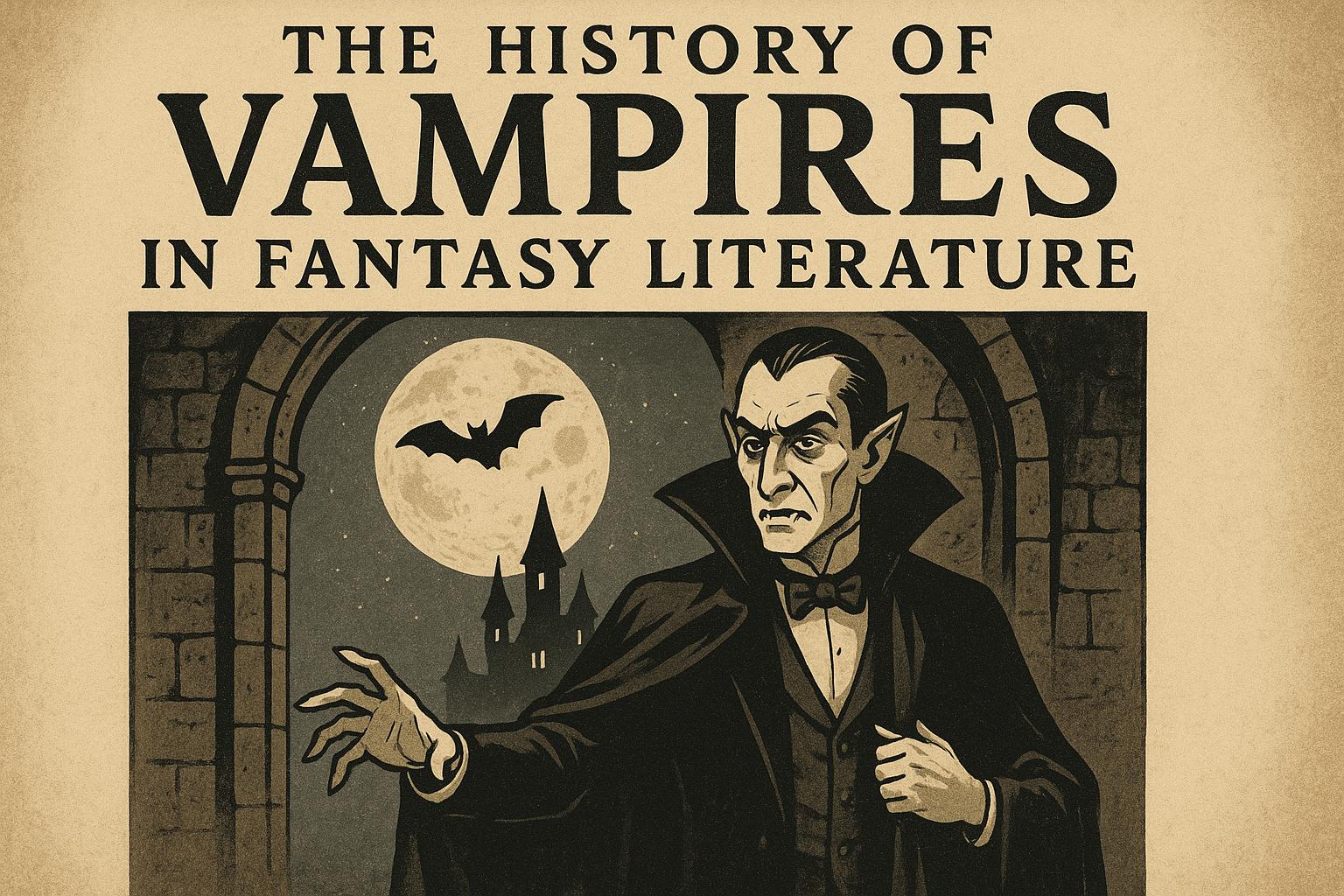The History of Vampires in Fantasy Literature

The Early Origins of Vampire Folklore
The concept of vampires holds a significant and ancient place in global folklore and mythology. These mythical creatures, known for their blood-drinking habits and their ability to rise from the dead as reanimated corpses, had been part of cultural traditions long before they gained prominence in fantasy literature. The stories of vampires can be found in the traditions of numerous societies, including those in Eastern Europe, Asia, and Africa. In these cultures, narratives often included supernatural figures who sustained themselves by preying upon the living, offering explanations for various natural phenomena and tapping into human fears. This suggests that the fear and fascination surrounding vampires may stem from a fundamental aspect of human psychology and cultural expression.
Vampires in 18th Century Literature
As the 18th century unfolded, vampires began to seep into European literature. The first notable literary appearance of vampires was in the form of poetry, with Heinrich August Ossenfelder’s poem “Der Vampyr” in 1748. This work laid the groundwork for future tales of vampires in European poetry, subtly intertwining with the Gothic themes of the time. Gothic literature was characterized by its exploration of horror, the supernatural, and the darker aspects of human nature. It was a rich soil in which vampire lore could take root and thrive. It was only later, towards the latter half of the 1800s, that vampires began to feature prominently in prose, helping to shape a burgeoning genre of horror and fantasy.
John Polidori and the Rise of the Vampyre
One of the most pivotal moments in the literary history of vampires was John Polidori’s “The Vampyre” published in 1819. Widely considered the first vampire novel, this work was instrumental in establishing the vampire genre within the realm of fantasy literature. Polidori introduced readers to Lord Ruthven, an aristocratic vampire who would become an archetype for future vampire characters. The depiction of Lord Ruthven influenced subsequent portrayals of vampires as alluring and enigmatic yet inherently dangerous. Polidori’s narrative thus laid the foundational tropes that have continued to define vampire literature. This work was not only a piece of fiction but also a cultural artifact that reflected the fears and fascinations of the time.
Influence of Bram Stoker
A discussion about vampire literature would be incomplete without acknowledging Bram Stoker’s seminal work, “Dracula“, published in 1897. Stoker’s novel had a profound impact, solidifying many aspects now synonymous with vampire mythology. Stoker’s Dracula introduced elements like the aversion to sunlight, the necessity of human blood for survival, and the iconic transformative bite. These features have become integral to the vampire narrative. Furthermore, Stoker wove elements of Gothic fiction into his story, crafting a novel that intertwines horror, romance, and suspense. The enduring popularity and influence of “Dracula” highlight its role as a cornerstone of vampire literature, inspiring countless adaptations across various media. The novel’s legacy continues to manifest in modern portrayals of vampires, underscoring its timelessness and cultural significance.
Modern Interpretations and Contemporary Literature
The portrayal of vampires underwent a significant transformation in the latter half of the 20th century, evolving from figures of pure horror to complex characters inhabiting a wide array of settings. Anne Rice’s “The Vampire Chronicles“, beginning with “Interview with the Vampire” in 1976, marked a notable shift in vampire literature. Rice’s vampires were imbued with depth and emotion, navigating existential themes and moral dilemmas. Her work explored the human condition through these immortal beings, presenting vampires as both sympathetic and monstrous. This evolution in portrayal resonates with the changing philosophical and cultural landscapes of the time.
In recent decades, vampires have continued to capture the imaginations of both readers and writers, further diversifying the genre. The expansion of vampire narratives into romance and young adult literature is epitomized by Stephenie Meyer’s “Twilight” series. These stories introduced vampires to new audiences, embedding them within tales of romance, identity, and coming-of-age. The adaptability of vampire narratives highlights their enduring appeal, allowing them to serve as antagonists, anti-heroes, and even protagonists, depending on the tale being told.
The rich tapestry of vampire literature continues to expand, with contemporary authors offering fresh interpretations that reflect modern sensibilities and cultural diversity. For readers keen to explore the breadth of vampire mythology, works by authors like Charlaine Harris and Deborah Harkness provide innovative takes on these timeless creatures. Harris’s and Harkness’s narratives exemplify how vampires remain relevant in contemporary fantasy literature, demonstrating their flexibility and capacity to resonate with audiences in new and exciting ways. Through such works, vampires persist as an enduring and multifaceted element of storytelling, ever-evolving yet deeply rooted in their mythological origins.
Comments are closed.
Comments on 'The History of Vampires in Fantasy Literature' (0)
Comments Feed